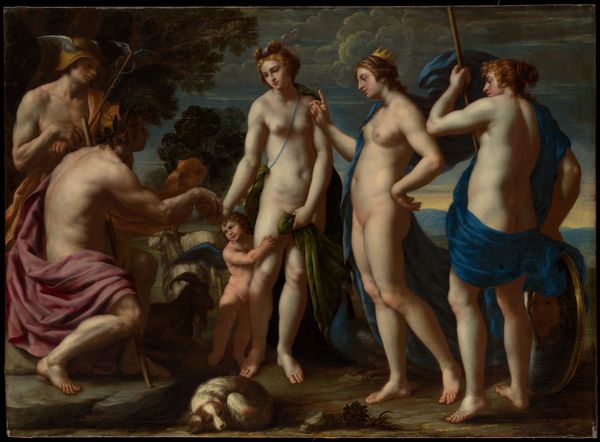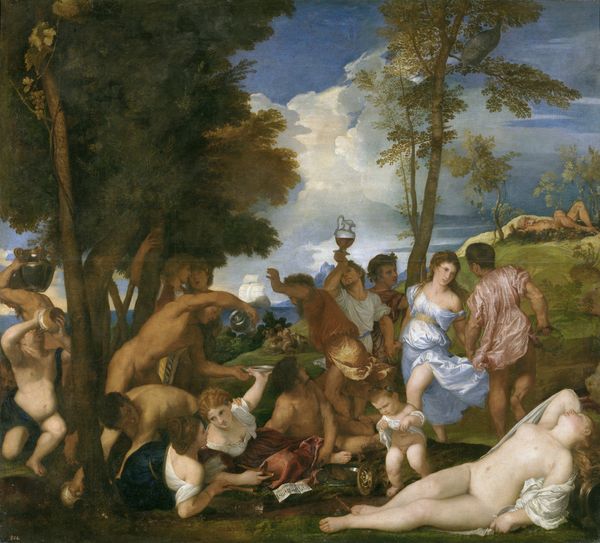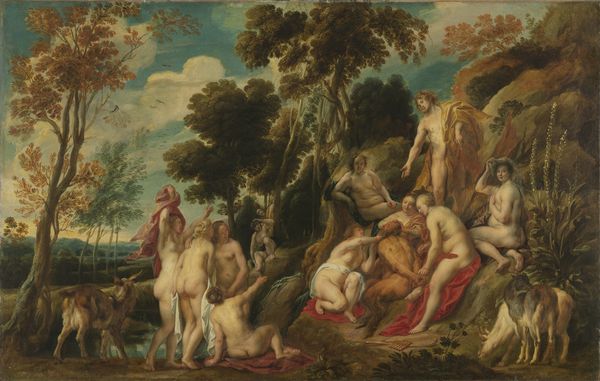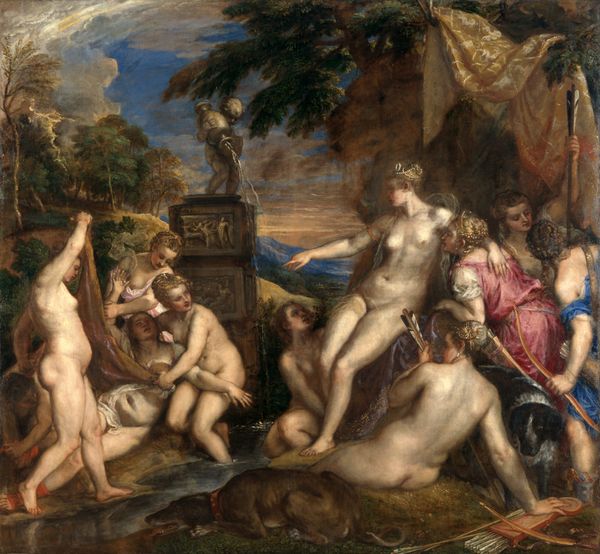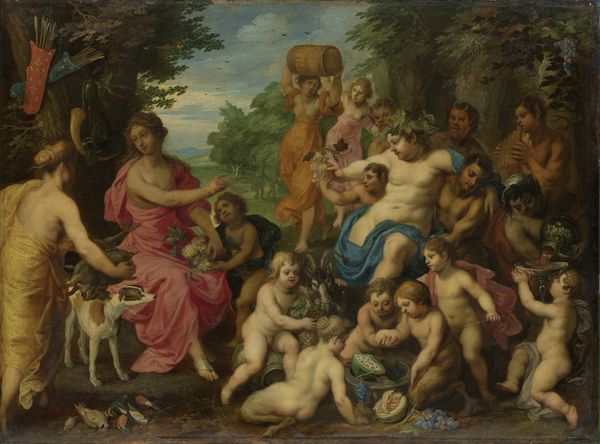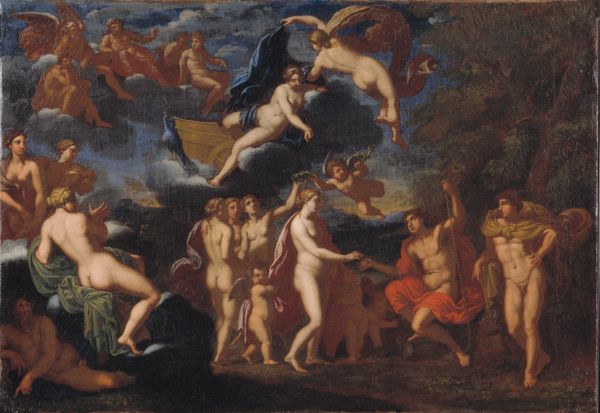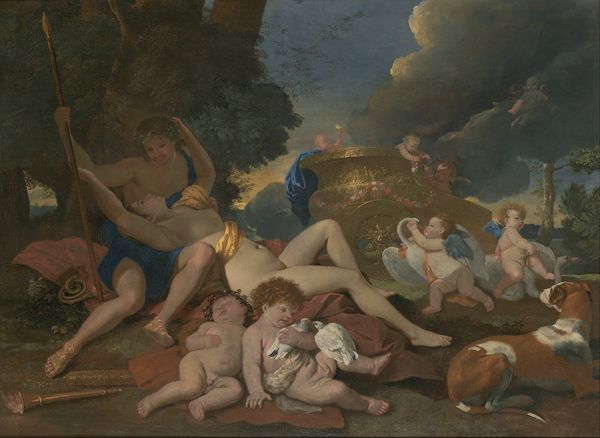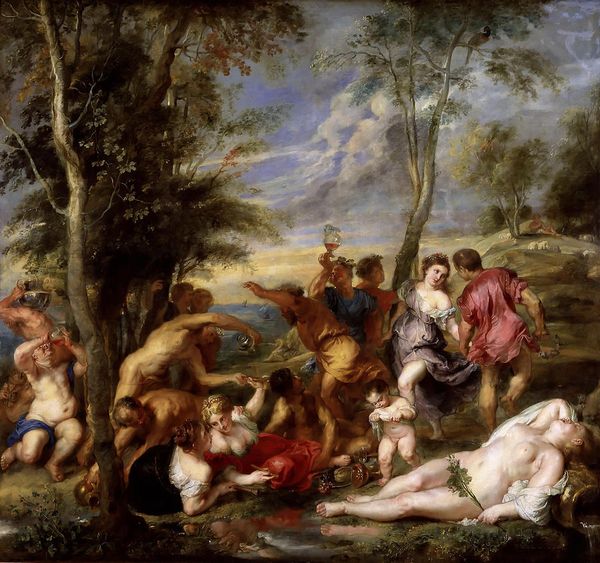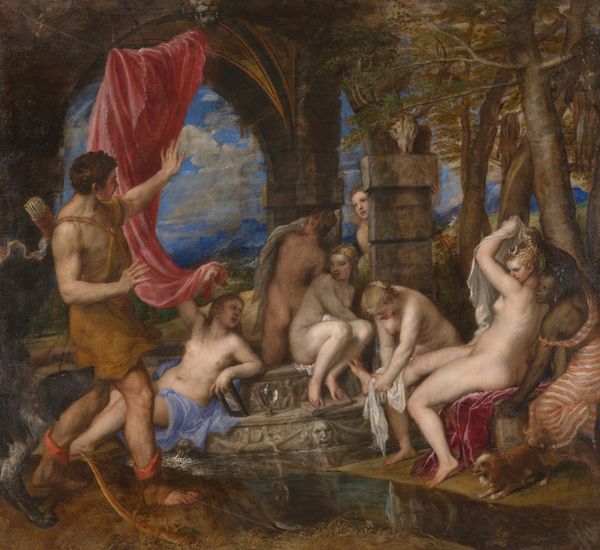
painting, oil-paint, oil-on-canvas
#
painting
#
oil-paint
#
landscape
#
mannerism
#
figuration
#
oil painting
#
history-painting
#
italian-renaissance
#
nude
#
italy
#
oil-on-canvas
Dimensions: 47 1/2 x 69 5/8 in. (120.65 x 176.85 cm) (canvas)
Copyright: Public Domain
Editor: Here we have Scarsellino’s "Nymphs at the Bath," painted around 1600. It's an oil on canvas currently at the Minneapolis Institute of Art. The grouping of figures reminds me of a Renaissance frieze, but somehow looser, more informal. What do you see in this piece? Curator: What strikes me is the careful negotiation between classical ideals and Mannerist sensibilities within its historical context. Consider how the art market during the late Renaissance increasingly valued mythological scenes, driven by wealthy patrons who desired art that reflected their erudition. This painting catered to that demand. Editor: So, it's responding to market forces? Curator: Exactly! And beyond just satisfying patrons' intellectual aspirations, these idealized nude figures and pastoral landscapes were also imbued with a powerful undercurrent of eroticism that was becoming increasingly accepted within certain elite social circles. It's a glimpse into a complex, shifting social landscape. Does the composition suggest anything about power dynamics or the viewing experience of the painting at the time? Editor: The way the nymphs interact seems almost performative, aware of being observed, like a play for an audience. Curator: Precisely! The knowing gaze, the theatrical poses – they acknowledge an implied viewer, a male gaze, which has significant implications for how we interpret the art's function within that culture. Considering that gaze is very critical when studying Renaissance nudes and historical receptions. Editor: That definitely reframes my understanding. It's not just about beauty, but about cultural power and who holds it. Curator: Indeed. The painting served a social purpose, beyond mere decoration. Thinking about those complex layers enhances our understanding of both the artwork itself and its world.
Comments
minneapolisinstituteofart almost 2 years ago
⋮
During the sixteenth century, the classical tradition of pastorali was revived. These were theatrical dramas in which the pleasures and pastimes of the rustic world were idealized and glorified. Scarsellino may have intended to invoke pictorially the spirit and ambience of these popular pastoral plays. His bathers are Naiads, the nymphs of bodies of fresh water, worshiped as goddesses of fertility and growth in Greek mythology. Ippolito Scarsella was the most important painter in Ferrara during the last phase of its Golden Age of painting. His landscapes of both sacred and secular themes anticipate the landscape painting tradition of the seventeenth century.
Join the conversation
Join millions of artists and users on Artera today and experience the ultimate creative platform.
